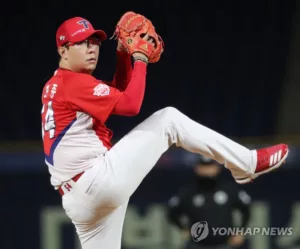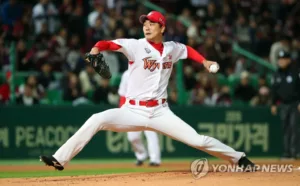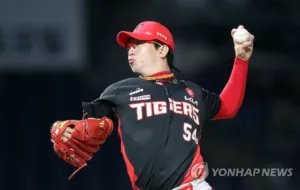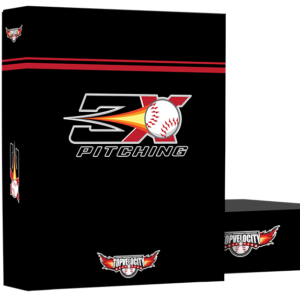 Baseball, a popular sport played and cherished around the world, is remarkable in its diversity. The technical intricacies of this universally adored sport reveal a wide range of nuances depending on the locale, much as languages and cuisines change among countries. In this investigation, we look into the art and science of baseball pitching, focusing on the mechanical differences between Korean and American pitchers.
Baseball, a popular sport played and cherished around the world, is remarkable in its diversity. The technical intricacies of this universally adored sport reveal a wide range of nuances depending on the locale, much as languages and cuisines change among countries. In this investigation, we look into the art and science of baseball pitching, focusing on the mechanical differences between Korean and American pitchers.
Korean pitchers have become a subject of study for both enthusiasts and specialists because of their distinct styles. American pitchers, on the other hand, have dominated the international baseball scene for years with their tremendous velocities. But what are the characteristics that distinguish the two styles? We delve into the fascinating world of baseball biomechanics to show the key differences between Korean and American pitching approaches.
1st Recognizing the Experts of Korean Baseball Study
It is only fitting that we thank and express our gratitude for the arduous work done by seasoned professionals in the area in preparing this exhaustive examination of the distinctions between Korean and American baseball pitching approaches. The case study "Kinematic and kinetic comparisons between American and Korean professional baseball pitchers" aided in the development of the findings offered in this article.
The aforementioned study was undertaken by a recognized team that included Rafael Escamilla, Glen Fleisig, Steven Barrentine, James Andrews, and Claude Moorman 3rd. Their investigation into the world of professional baseball has revealed essential aspects of pitching tactics that serve as the foundation of our talk here.
Their rigorous examination and scientific rigor in comparing the throwing mechanics of American and Korean players has substantially expanded our understanding of the subject. The knowledge and profound insights given in this fundamental work provide a solid foundation for the discussions and comparisons we make in this piece.
Our readers can be confident that the information presented here is based on reliable scientific research and professional analysis. Indeed, the dedicated research team of the aforementioned study deserves respect for the comprehensive and nuanced material offered in this discussion. As we explore deeper into the fascinating world of baseball mechanics, we continue to stand on the shoulders of these scientific giants.
Mechanical Differences Between Korean Baseball and American Pitchers
 Baseball's essence lies in its pitching skills, and the mechanics used by Korean and American pitchers differ significantly. It all starts with lead foot contact, one of the first yet most important parts of the pitching sequence.
Baseball's essence lies in its pitching skills, and the mechanics used by Korean and American pitchers differ significantly. It all starts with lead foot contact, one of the first yet most important parts of the pitching sequence.
Lead Foot Contact: The Beginning of the Distinctions
American pitchers have much more horizontal abduction of the throwing shoulder upon lead foot contact. This lengthy action generates greater momentum, allowing for a more strong pitch.
Korean pitchers, on the other hand, have much more abduction and external rotation of the throwing shoulder. This approach gives them more control over the trajectory and spin of the ball, making their throws more unpredictable.
A Tale of Two Techniques in Arm Cocking
 Other distinctions emerge as the pitcher moves into the arm cocking phase. Maximum shoulder external rotation and maximum pelvic angular velocity are substantially higher in American pitchers. This implies that their pitches rely primarily on rotational strength and hip mobility, which contribute to the ball's overall velocity and force.
Other distinctions emerge as the pitcher moves into the arm cocking phase. Maximum shoulder external rotation and maximum pelvic angular velocity are substantially higher in American pitchers. This implies that their pitches rely primarily on rotational strength and hip mobility, which contribute to the ball's overall velocity and force.
Korean pitchers, on the other hand, use a different method to arm cocking. Despite not achieving the same level of shoulder external rotation and pelvis angular velocity as their American counterparts, their mechanics result in effective and efficient pitches.
The Time of Ball Release
The moment the ball is released, more variations emerge. American pitchers have a much higher forward trunk tilt and ball velocity, as well as a significantly lower knee flexion. The additional tilt propels the ball with increased momentum, resulting in enhanced ball velocity.
Although the mechanics of American pitchers result in a 10% higher ball velocity than that of Korean pitchers, the latter's technique is not without benefits. Despite producing less ball velocity, Korean pitchers' skills assure increased pitch precision and control, providing a tactical edge in specific game situations.
The Importance of Force: From Arm Cocking to Deceleration
During arm cocking, American pitchers generate much more maximum shoulder internal rotation torque and maximum elbow varus torque, allowing for a stronger and faster delivery.
Additionally, American pitchers have much higher elbow flexion torque during arm acceleration and significantly higher shoulder and elbow proximal forces during arm deceleration. While these increased stresses and torques contribute to better ball velocity, they may also predispose American pitchers to shoulder and elbow ailments.
Korean pitchers, on the other hand, keep the forces and torques they generate in check. This ensures that their pitches are efficient and less likely to result in self-injury, which will be beneficial in the long run.
In essence, both Korean and American throwing styles have distinct advantages and disadvantages. While American pitchers create more power and have higher ball velocity, Korean pitchers have superior control and are less likely to injure themselves. Recognizing these mechanical distinctions not only helps athletes adapt and learn, but also adds dimension to the great sport of baseball.
Questions and Answers: Korean Baseball
- Why do American pitchers throw with larger shoulder and elbow forces?
American pitchers have higher shoulder and elbow forces due to their unique pitching mechanics, which include more horizontal abduction of the throwing shoulder, as well as more shoulder external rotation and pelvis angular velocity. - How do Korean baseball players' pitching techniques differ from those of American pitchers?
During the lead foot contact phase, Korean pitchers use more abduction and external rotation of the throwing shoulder. This style emphasizes pitch control and surprise over great velocity. - Why would American pitchers be more prone to injury?
The increased stresses and torques produced by pitching may predispose American pitchers to more shoulder and elbow injuries. These increased kinetics are the result of their skill, notably during arm cocking, acceleration, and deceleration. - Is there any advantage to the decreased ball velocity found in Korean pitchers?
Although Korean pitchers may have a lower ball velocity than American pitchers, their technique allows for better pitch accuracy and control, which can provide a strategic advantage in game situations. - What effect does forward trunk tilt have on ball velocity?
Greater forward trunk tilt, as seen in American pitchers, generates increased momentum, thus contributing to a higher ball velocity during the pitch. - How does maximum pelvic angular velocity affect a pitch?
A higher maximum pelvis angular velocity allows for more rotational power during a pitch, which can contribute to a faster and more forceful throw. This is typically seen in American pitchers.
Next Steps in Your Pitching Journey
 As we conclude this incisive examination of the technical differences between Korean and American pitchers, you may be wondering: How can I improve my throwing talents to compete with these pros? The answer is in the correct training, and we have just the thing for you: the 3X Velocity Camp.
As we conclude this incisive examination of the technical differences between Korean and American pitchers, you may be wondering: How can I improve my throwing talents to compete with these pros? The answer is in the correct training, and we have just the thing for you: the 3X Velocity Camp.
The 3X Velocity Camp is a complete training routine that involves both physical and mental fitness. It is specifically designed to shape and improve your pitching abilities. This method has been praised for transforming regular players into top pitchers and assisting them in achieving amazing performance gains. The 3X Velocity Camp's skilled instructors recognize that each player is unique, and they adapt to specific demands, guaranteeing that each trainee receives specialized attention and instruction.
To give you an idea of what's in store, the program includes, among other things, biomechanics training, strength and conditioning, velocity development, mental training, and injury avoidance. In essence, it's a one-stop shop for all of your pitching development requirements.
So, why bother? Give your baseball ambitions the boost they need. Step upon the route that will lead to exceptional pitching abilities, a path that many successful players have already taken. Take advantage of this golden opportunity to learn from the finest in the business and see your pitching ability soar. Sign up for the 3X Velocity Camp today and begin your quest to become an exceptional pitcher!


